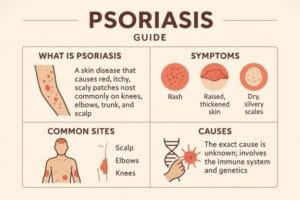Mpox: Everything You Need to Know for 2025 and Beyond
Table of Contents
Mpox: Everything You Need to Know for 2025 and Beyond
Mpox, a viral illness capable of unsettling human populations, warrants our focused attention. What exactly is this virus that has prompted global health declarations, and what trajectory might it chart in the years ahead? We see health reports, then chatter online, then conflicting information; it is vital to discern the realities of mpox, understanding both its current presence and the foresight guiding future efforts.
Understanding Mpox: The Essentials and Its New Name
Imagine an illness, flu-like at first, quickly blossoming into a distinctive rash. That is mpox for many, a viral entity sharing lineage with smallpox. Usually, individuals shake it off with minimal trouble, yet for some, the illness can manifest quite seriously. We must comprehend this variability.
The World Health Organization (WHO) decided in 2022 to rename “monkeypox” to “mpox.” This change was not just a whim. It was a calculated move to reduce stigma and clarify facts. You see, the original name inadvertently implied monkeys were the primary culprits for spread, which is not true for human outbreaks. This simple adjustment helps us direct our focus away from inaccurate associations and onto effective public health messages.
Tracing Mpox: The Virus’s Enduring Story
The mpox virus first surfaced, quite unexpectedly, in 1958. Researchers in Denmark, studying monkeys, encountered two distinct outbreaks of a pox-like disease within their colonies. This initial discovery gave the virus its now-modified name.
The narrative shifts to 1970 when the first documented human mpox case appeared. A nine-month-old boy in the Democratic Republic of Congo (DRC) carried this distinction. This event coincided with intensive global campaigns to eradicate smallpox. After smallpox was declared vanquished in 1980, and routine smallpox vaccinations ceased, human populations found themselves with diminished immunity to orthopoxviruses. This gap, some experts suggest, created an opening, allowing mpox to emerge more regularly in parts of Central and West Africa.
Before 2022, mpox largely remained confined to Africa, with a few notable exceptions. For instance, the United States experienced an outbreak in 2003, traced back to exotic pets, specifically prairie dogs infected by imported Gambian pouched rats from Ghana. This event highlighted the potential for zoonotic spillover. Then, in 2017, Nigeria saw a significant outbreak of the Clade II variant, demonstrating clear human-to-human transmission. This strain likely circulated quietly for years before its more overt global appearance.
The real shake-up came in May 2022. A global mpox outbreak, driven by a milder Clade IIb variant, spread rapidly across continents. This variant predominantly transmitted through sexual contact among men who have sex with men, prompting the WHO to declare a Public Health Emergency of International Concern (PHEIC) in July 2022. I remember thinking, “How did this get out so quickly?” The answer suggests the virus was adapting, finding new pathways in human hosts.
Mpox Today: What We See, How It Moves, and Rising Concerns
When you encounter mpox, its symptoms paint a specific picture. Initially, it often feels like a nasty flu: fever, chills, headache, muscle aches, swollen lymph nodes. But then, the distinctive rash manifests. It begins as flat spots, transforming into raised bumps, then pus-filled blisters, which eventually scab over and shed, leaving fresh skin. This rash can be incredibly painful or intensely itchy, affecting various body parts, including face, hands, feet, genitals, or anus.
How mpox moves between people demands our clear understanding:
- Close Physical Contact: Skin-to-skin contact, intimate activities (including sexual contact), kissing, touching lesions directly.
- Contaminated Items: Sharing bedding, clothing, towels, or sex toys used by an infected person.
- Respiratory Droplets: Prolonged, close face-to-face conversations.
- Mother-to-Child: A pregnant individual can transmit the virus to their unborn baby.
- Animal Contact: Bites or scratches from infected animals, or handling infected animal meat, especially in endemic regions.
Who faces the most significant mpox risk from severe illness? Most individuals recover fully without complications, yet some groups must exercise heightened caution. Young children, particularly those under eight years old, pregnant individuals, and people with compromised immune systems—like those with advanced HIV—are at a higher risk for severe mpox disease and complications, even death. This fact dictates our preventative strategies.
We speak of two distinct mpox virus types, or clades: Clade I and Clade II. Clade I, typically found in Central Africa, usually causes more severe illness and higher mortality. Clade II, prevalent in West Africa and responsible for the 2022 global outbreak, tends to be milder. But we are watching a new chapter unfold.
August 2024 brought renewed alarm. Experts are seriously concerned about a new, more aggressive Clade Ib variant causing a massive surge in Central Africa, with disproportionate impacts on children. This led to another WHO Public Health Emergency of International Concern declaration. This new variant, more transmissible and clinically aggressive, has even shown up in the United States, with cases in Los Angeles County confirmed in individuals with no recent travel history to endemic regions. This indicates local community spread of a more dangerous strain, making mpox an ongoing concern.
Illustration of the Mpox virus, highlighting its structure.
Defending Against Mpox: Prevention and Current Treatments
The good news is, we have tools to fight mpox. Prevention is our strongest defense.
Vaccination is key:
- JYNNEOS: This is the preferred vaccine option, a non-replicating live vaccine, typically administered in two doses. It is considered safer for most individuals, including those who are immunocompromised.
- ACAM2000: An older live, replicating vaccinia virus vaccine. It carries more potential side effects, including heart issues, and its use is more restricted.
If you are at high risk of exposure to mpox, or have been recently exposed, talk to your doctor about vaccination. Getting vaccinated within four days of exposure may prevent the disease, and within 4 to 14 days, it could make the illness less severe.
When mpox strikes, treatment strategies focus on management. For most mild cases, the approach is supportive care. This means managing pain, staying hydrated, and tending to the rash. For severe cases or for individuals at high risk for severe illness, antiviral medications become important.
Antiviral Medications for Mpox:
- Tecovirimat (TPOXX): This is the most widely used antiviral. However, recent studies from trials like STOMP and PALM007 suggest that while TPOXX is safe, it might not significantly shorten the duration of the rash or alleviate pain for milder cases of mpox (Clade II and Clade I). This doesn’t mean it is useless, but it underscores the need for continued research into its efficacy for severe illness and specific populations.
- Brincidofovir and Cidofovir: These antivirals inhibit viral DNA synthesis and are also used for severe mpox or in high-risk patients.
- Vaccinia Immune Globulin Intravenous (VIGIV): This can be considered for certain patients, sometimes in combination with other treatments.
Supportive care, including hospitalization, proper nutrition, and hydration, has shown significant promise in improving outcomes, even for severe mpox, highlighting its fundamental importance.
Sifting Through the Noise: Dispelling Mpox Misinformation
Misinformation, often potent and pervasive, has unfortunately surrounded mpox. We need to cut through the noise with facts.
Common Mpox Myths I encounter:
- It is a new disease or lab-created. False. The mpox virus appeared in 1958; humans encountered it in 1970. It is a naturally occurring zoonotic virus, not a laboratory construct.
- It is only a “gay disease.” Absolutely incorrect. Anyone can contract mpox through close contact. While the 2022 outbreak disproportionately affected certain communities, the virus does not discriminate based on sexual orientation. Stigma only hinders public health efforts by making people hesitant to seek help.
- It is exclusively a sexually transmitted infection (STI). While sexual contact is a very common transmission route, mpox spreads through any close physical contact with lesions, rashes, or bodily fluids, or through contaminated objects.
- It is caused by COVID-19 vaccines. This is a baseless conspiracy theory. Mpox and COVID-19 are caused by entirely different viruses from different families. You cannot get mpox from a COVID-19 vaccine.
- You can catch it from swimming pools or just being in a crowd. Not true. Mpox requires close, direct contact for transmission. It does not linger in the air like some other respiratory viruses.
Unequal vaccine access has also generated controversy. In the 2022 outbreak, vaccines were readily available in some non-African countries while endemic African nations struggled to acquire doses. This disparity highlights a global health equity problem we need to address collectively. My friend, who prefers to remain anonymous, once told me, “I was so confused by everything online. It wasn’t until I spoke to my doctor that I felt I truly understood mpox. The myths were scarier than the facts.” This sentiment resonates. Trust reliable sources like the CDC and WHO.
Scientists working on Mpox research.
The Road Ahead for Mpox: Evolution, Innovation, and Collective Action
Mpox isn’t going away quietly. The virus continues to evolve, presenting new challenges and opportunities for medical advancements.
Key areas experts are watching:
- Evolving Threats: The aggressive Clade Ib, now spreading globally and domestically in places like the U.S. without travel history, is a serious concern. Scientists are closely monitoring new mutations that could make the virus more adept at infecting humans.
- Exciting Vaccine Breakthroughs:
- Next-Gen mRNA Vaccines: Moderna’s mRNA-1769 and BioNTech’s BNT-166A are in trials. These could offer broader, longer-lasting protection against various orthopoxviruses.
- Plant-Based Vaccines: Innovative approaches are showing promise, offering cost-effective, large-scale production possibilities.
- Microneedle Patch Deliveries: Imagine a simpler, less invasive way to get vaccinated, making distribution easier, especially in remote areas. Tonix Pharmaceuticals is exploring this for its horsepox-based vaccine candidate, TNX-801.
- Faster, Smarter Mpox Diagnostics:
- Rapid Molecular Tests: CRISPR-based technologies and automated PCR systems, like the Xpert Mpox test, provide results in minutes, crucial for quick diagnosis and containment.
- Optical Biosensors: These new tools can detect the virus within two minutes of analysis, differentiating mpox from other infections efficiently.
- Better Mpox Treatment Insights: Research aims to refine antiviral efficacy, particularly for tecovirimat, and to identify new drugs for severe mpox, addressing cases that show resistance to current antivirals.
- The Global Game Plan: We need stronger surveillance worldwide to detect outbreaks early. Ensuring fair and equitable access to mpox treatments and vaccines for everyone, regardless of location, is paramount. Global teamwork and coordinated efforts are not merely aspirational; they are essential to preventing new mpox outbreaks and containing existing ones. This demands human oversight in analysis, ensuring genuine value over scaled, low-quality outputs.
The scientific community, united with public health organizations, stands committed to understanding and mitigating mpox. It requires constant vigilance, adaptable strategies, and global cooperation. We must act decisively and collaboratively to protect communities from this evolving mpox threat.
Mpox: Frequently Asked Questions
- What is mpox? Mpox is a viral illness caused by the mpox virus, related to smallpox, characterized by flu-like symptoms and a distinctive rash.
- How does mpox transmit? Mpox spreads primarily through close contact with an infected person’s rash, bodily fluids, or contaminated materials, including intimate and sexual activities.
- Are mpox vaccines effective? Yes, vaccines like JYNNEOS offer protection against mpox, reducing the risk of infection and severe illness.
- What are common mpox symptoms? Symptoms include fever, chills, headache, muscle aches, swollen lymph nodes, followed by a rash that progresses from spots to blisters and scabs.
- Can children get mpox? Yes, children can contract mpox and are among those at higher risk for severe illness and complications.
- Is there a specific mpox treatment? For severe cases, antivirals like tecovirimat may be used, though supportive care is essential for all patients.
- Why did mpox’s name change? The WHO changed the name from “monkeypox” to “mpox” to reduce stigma and clarify that monkeys are not the primary source of human outbreaks.















Post Comment